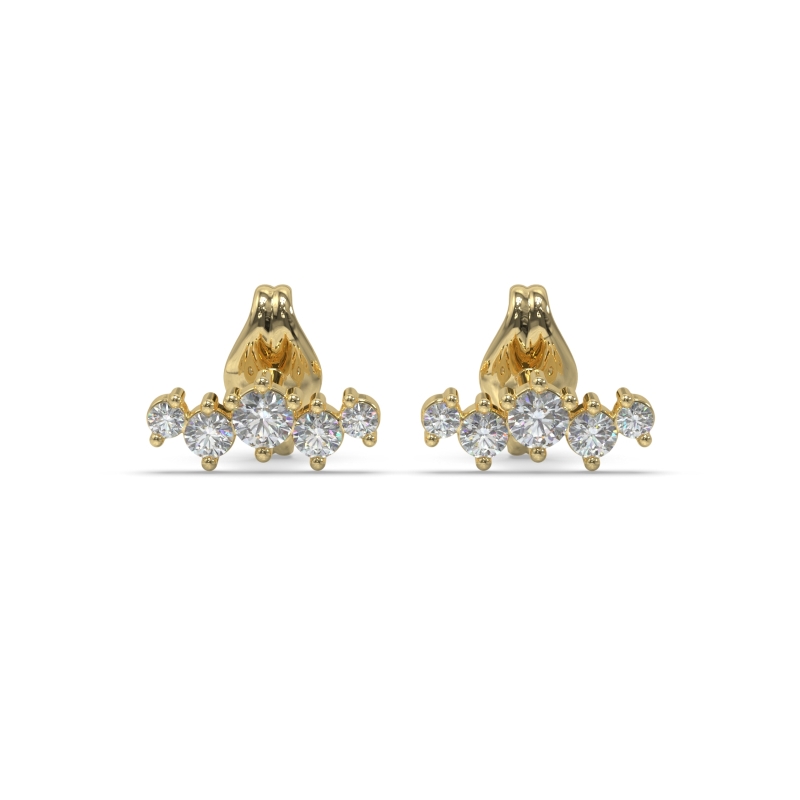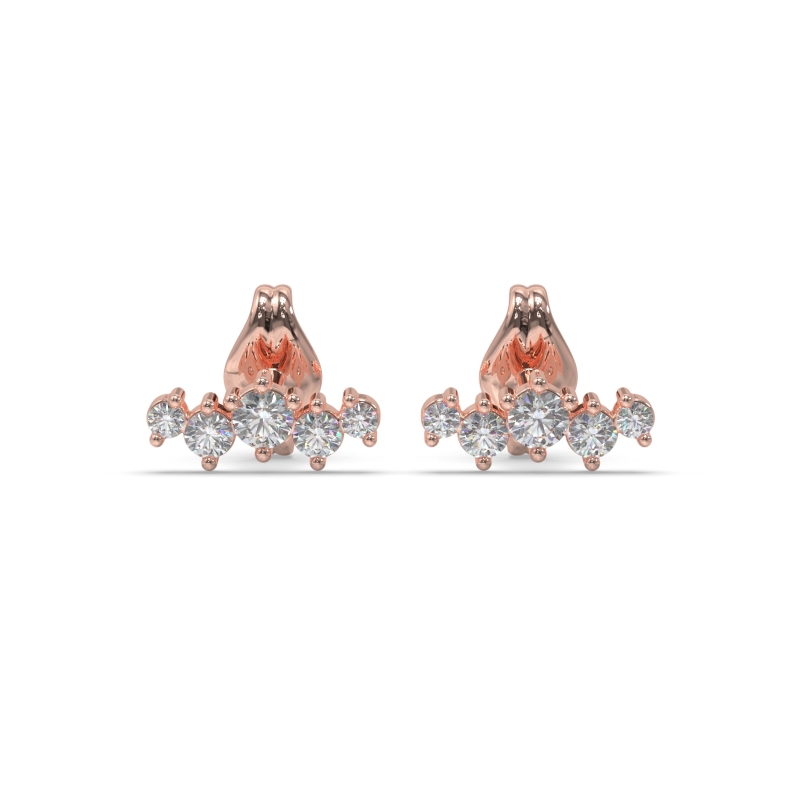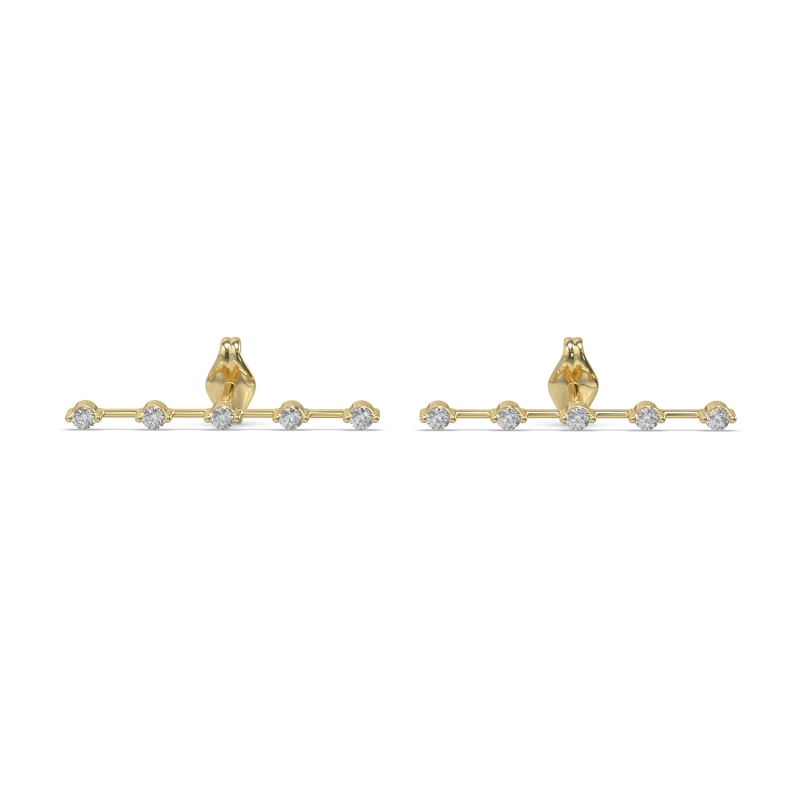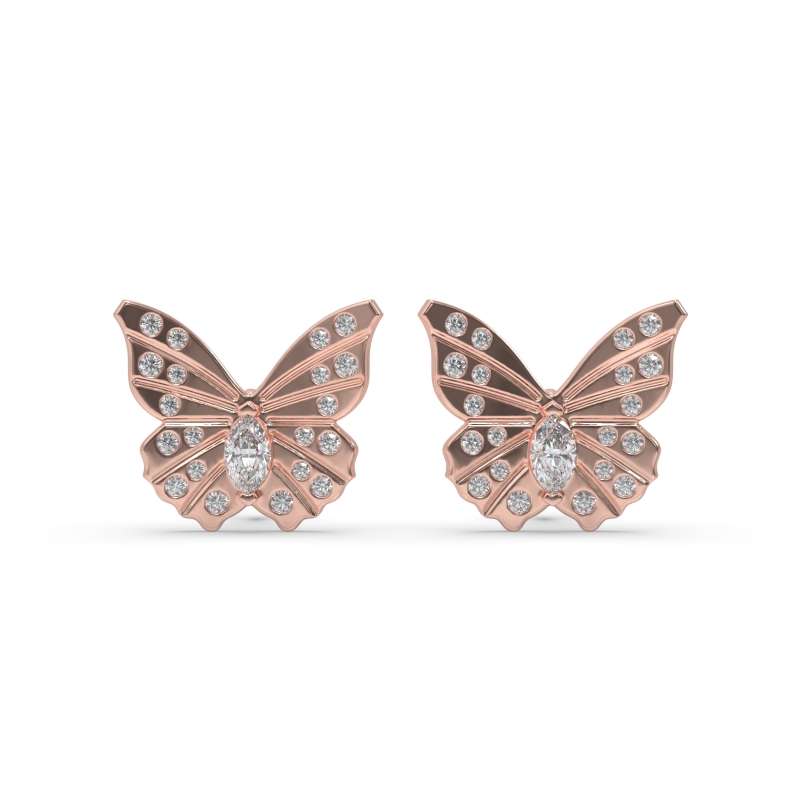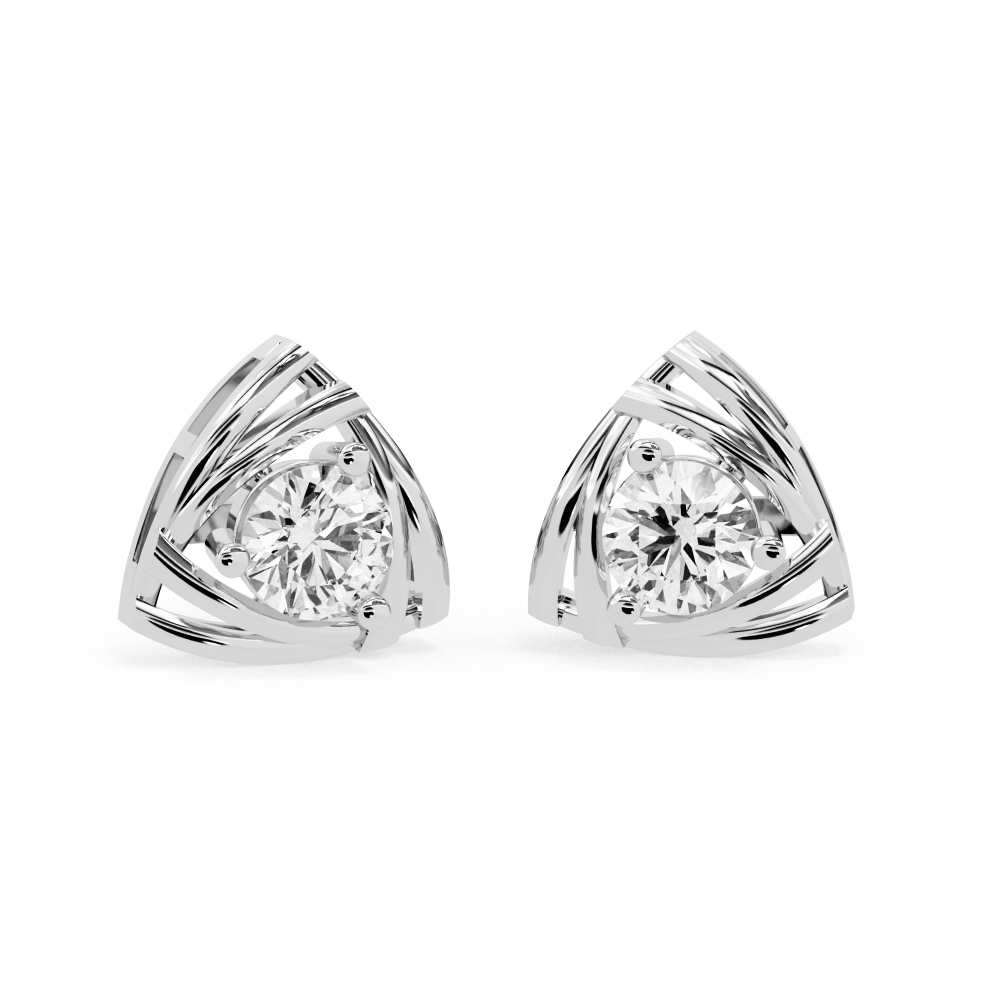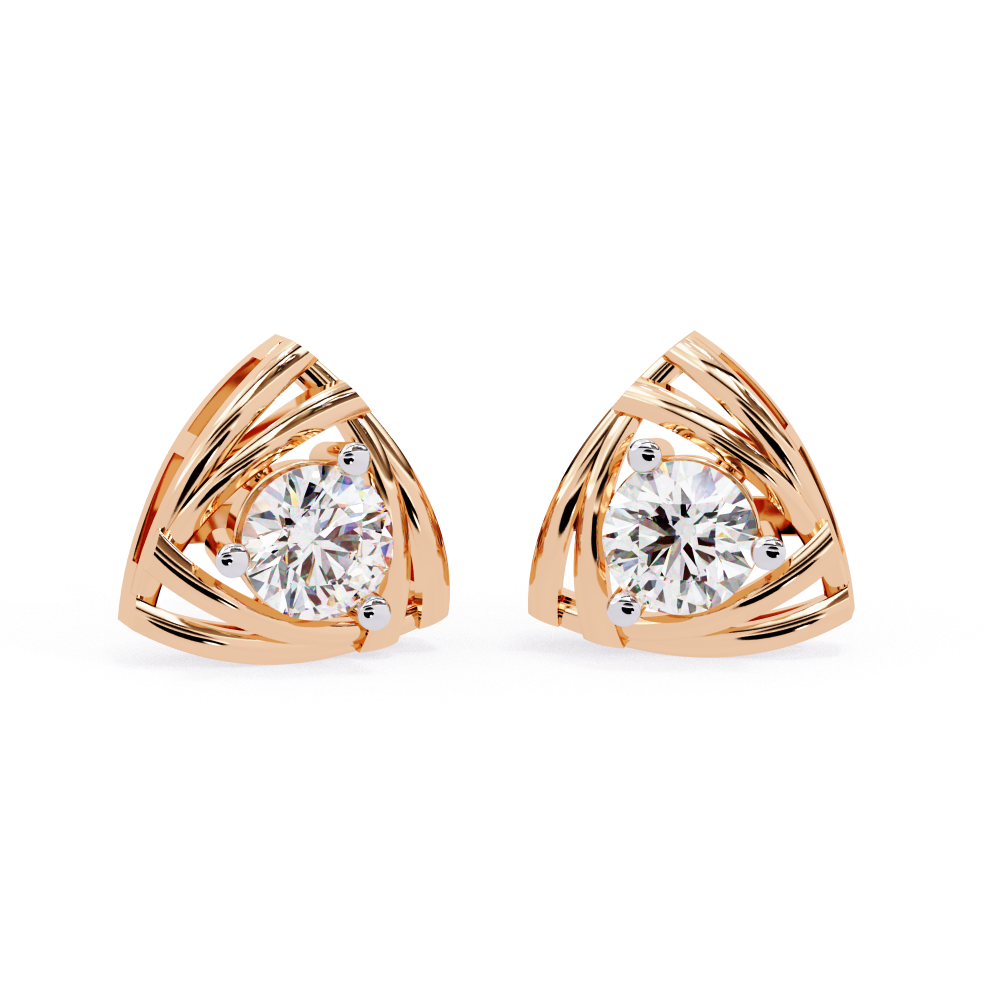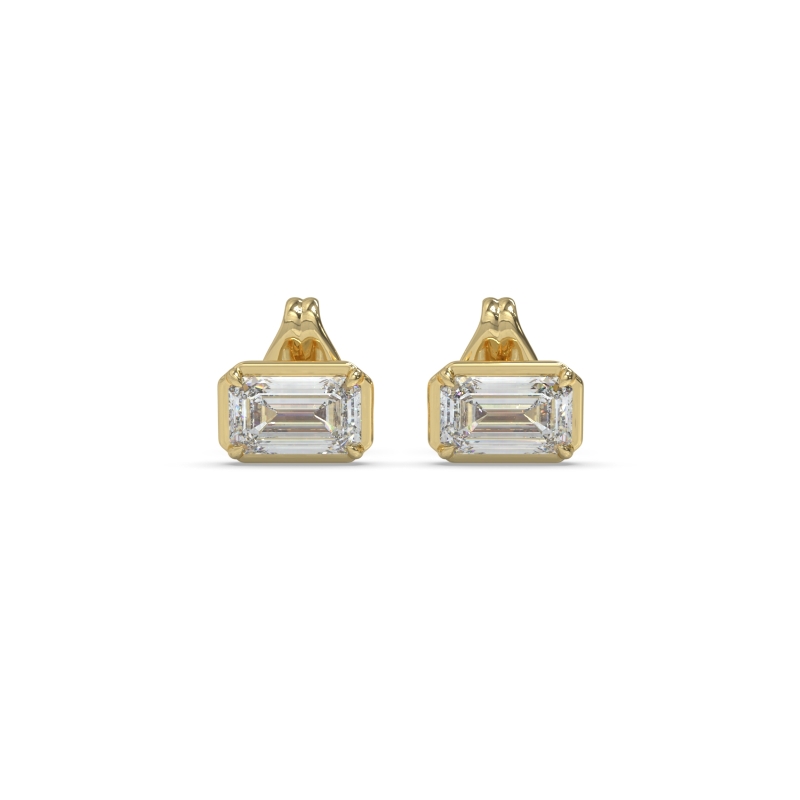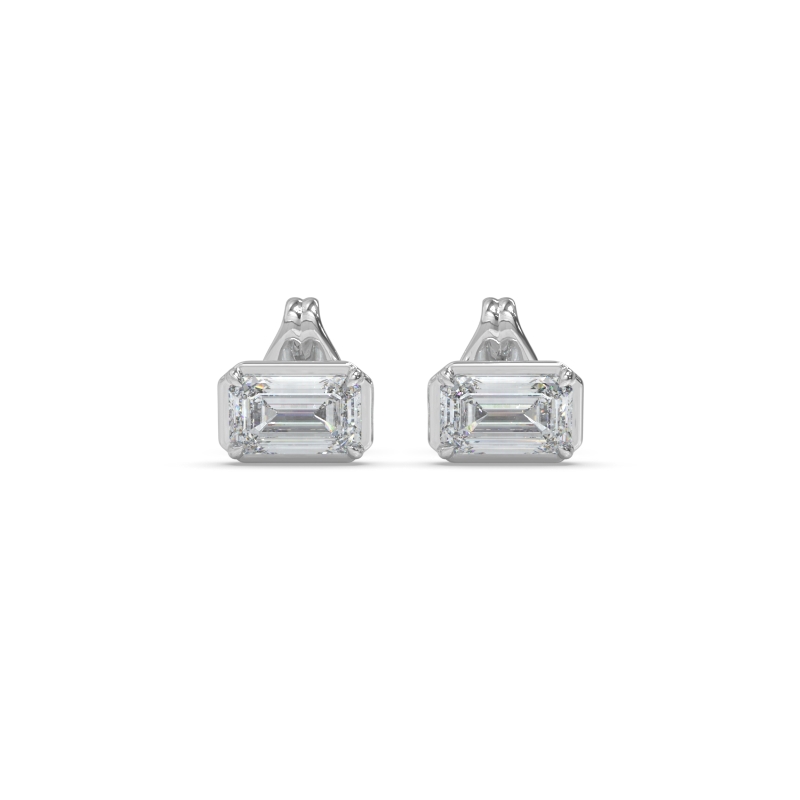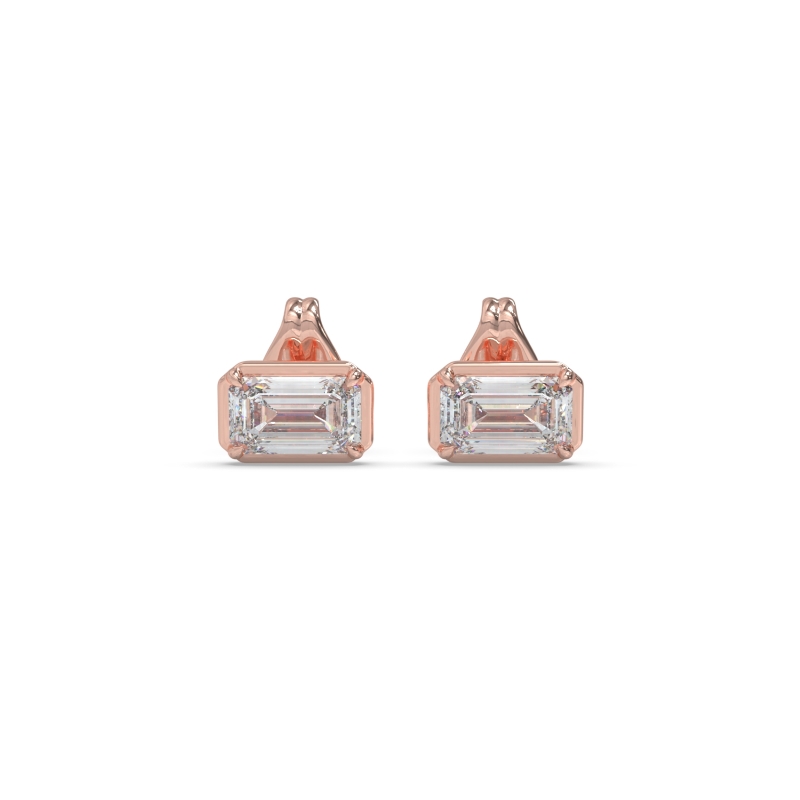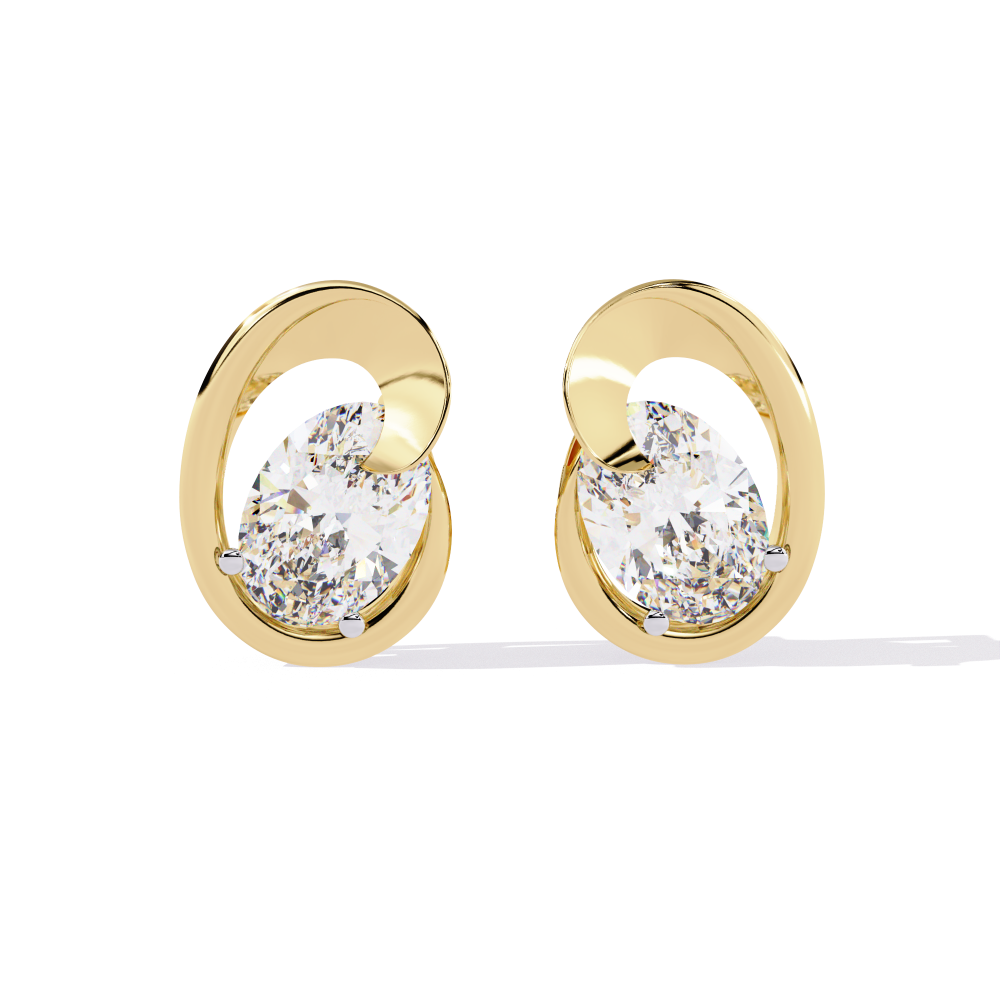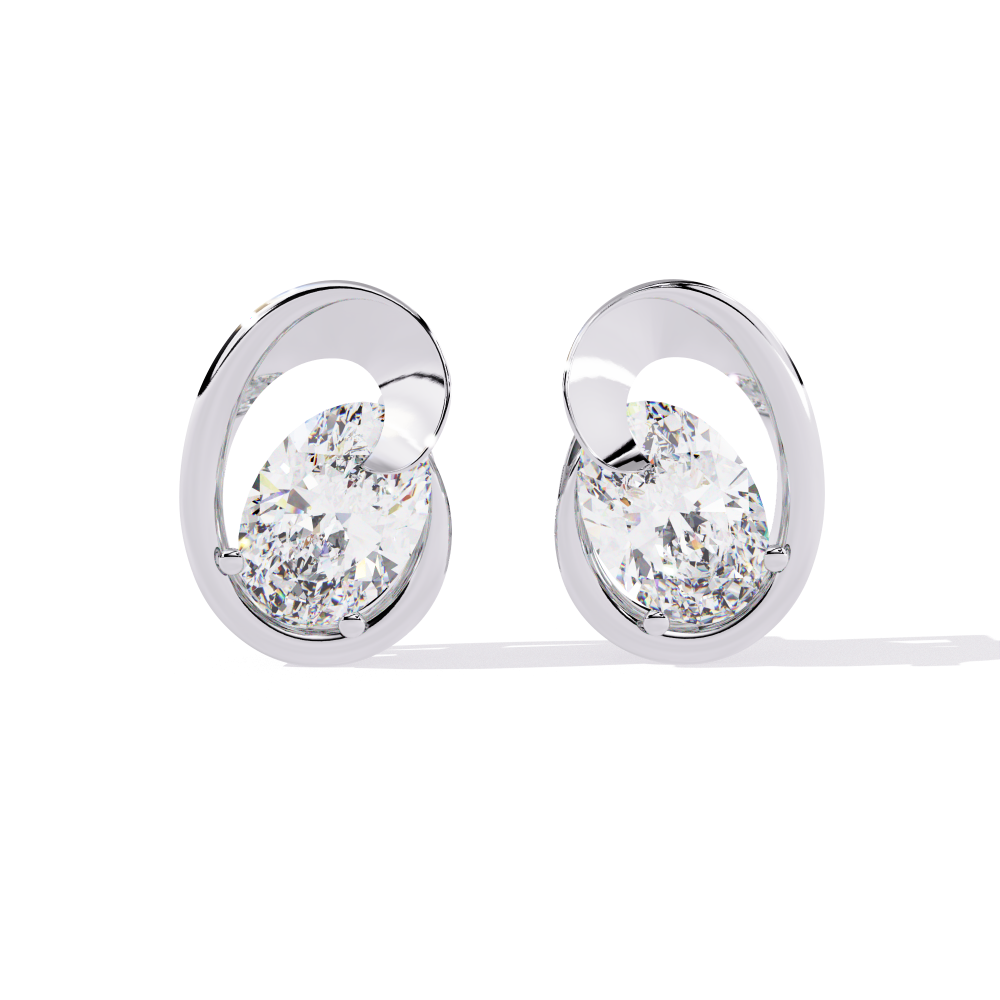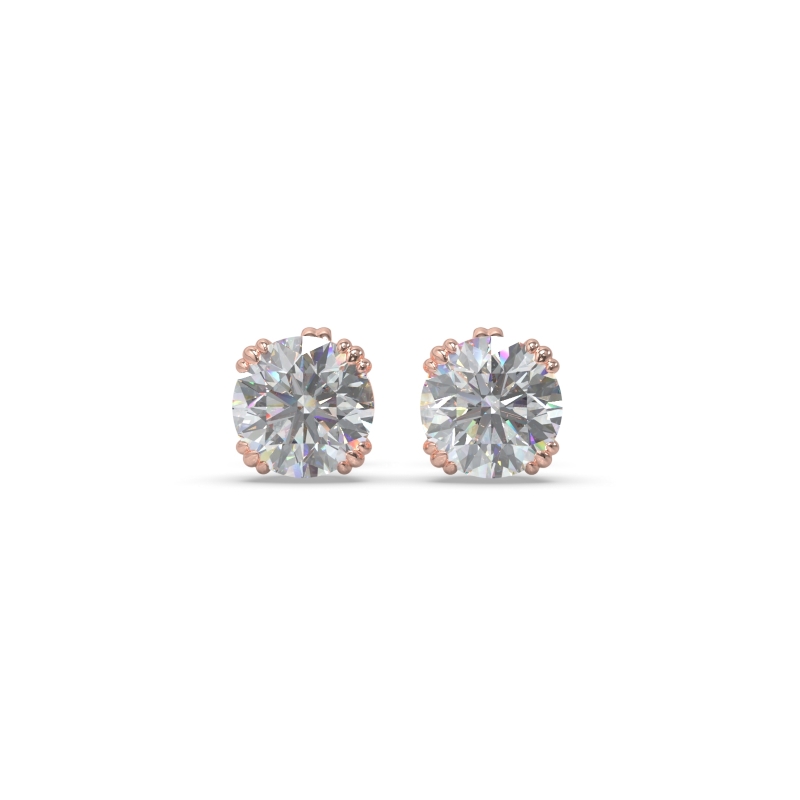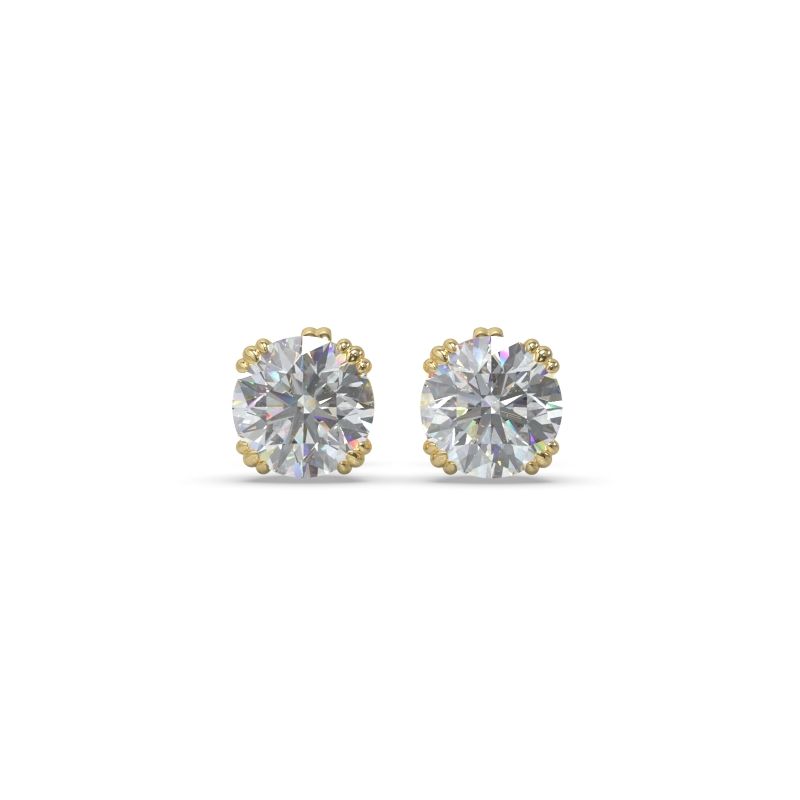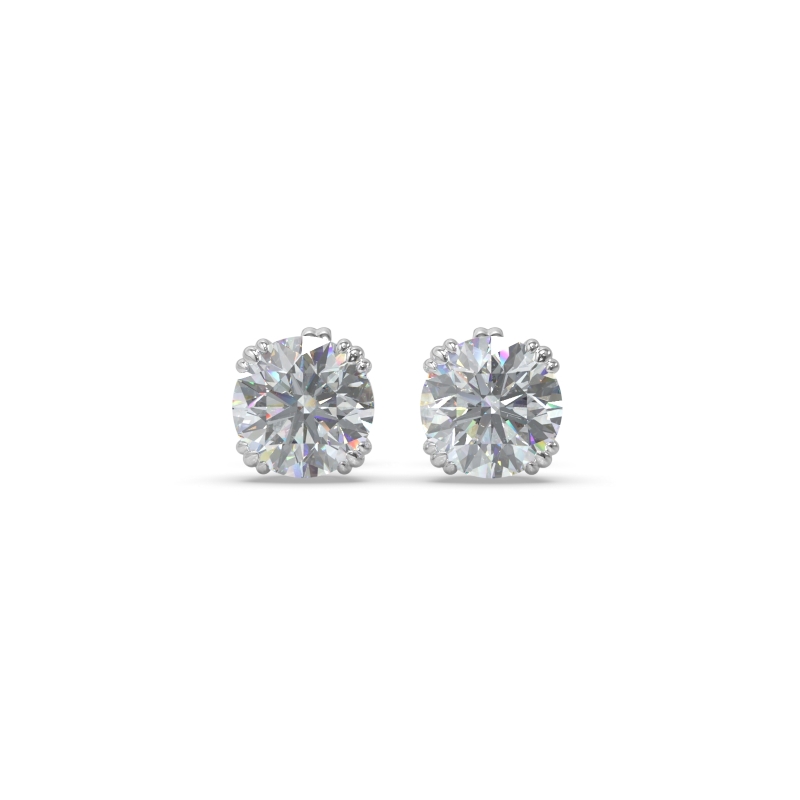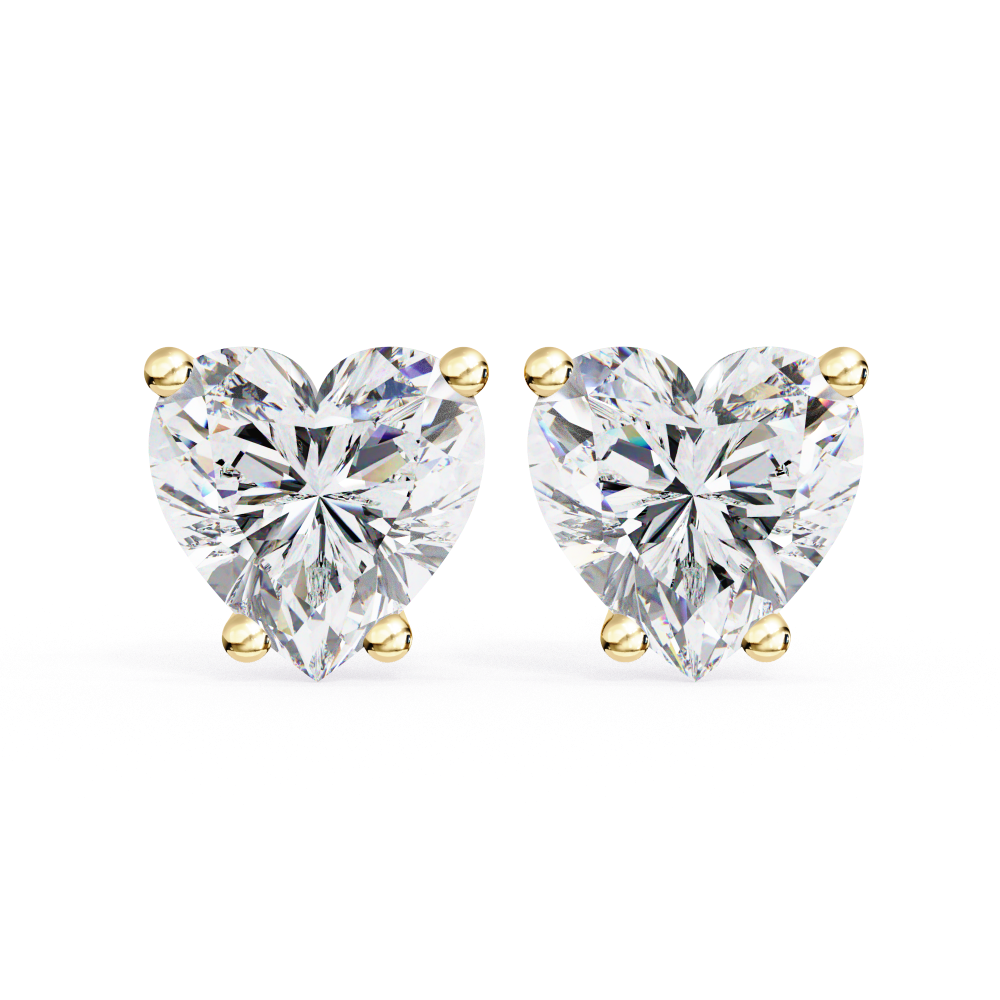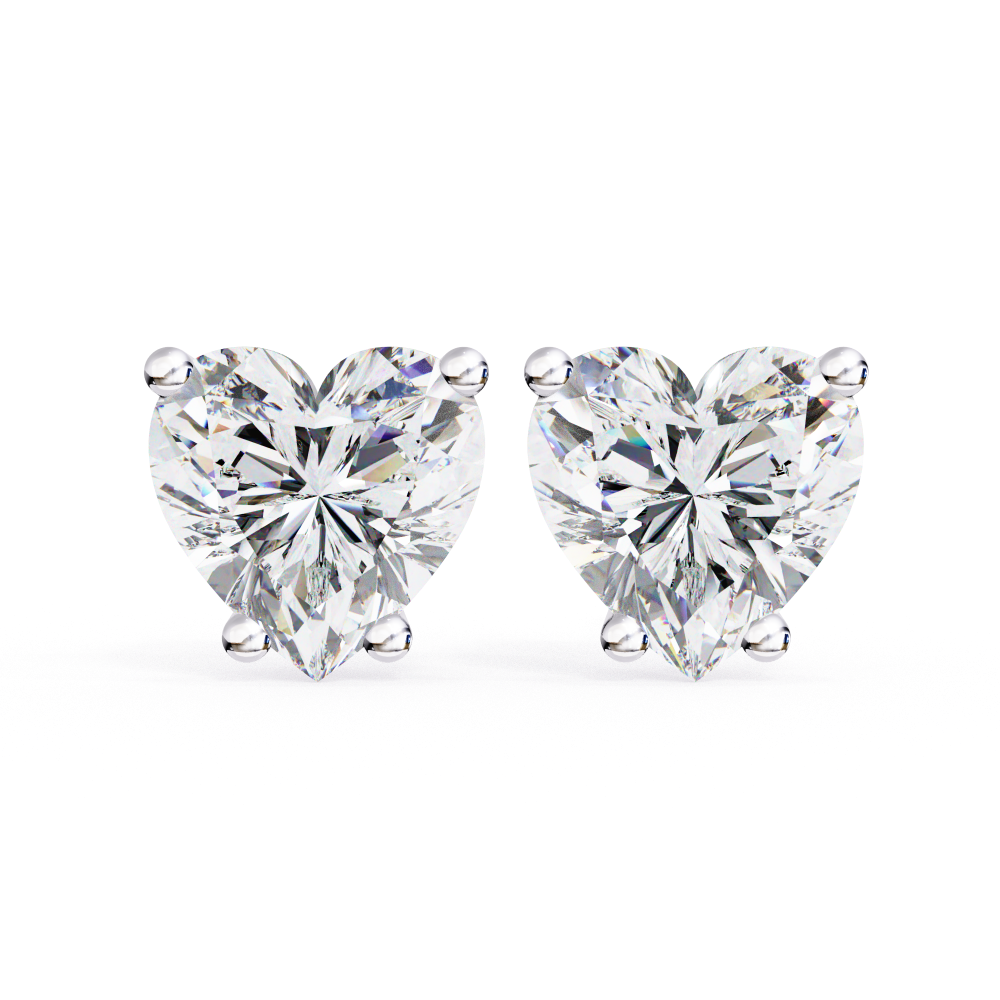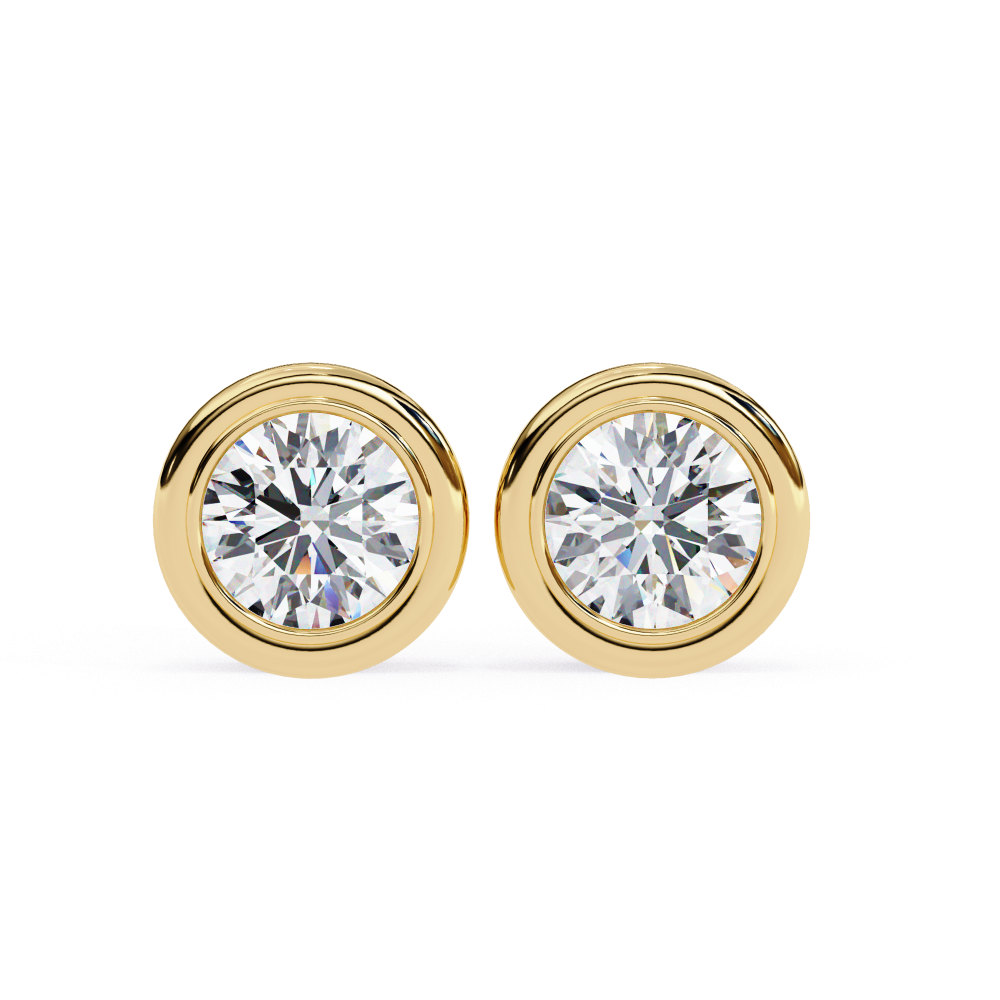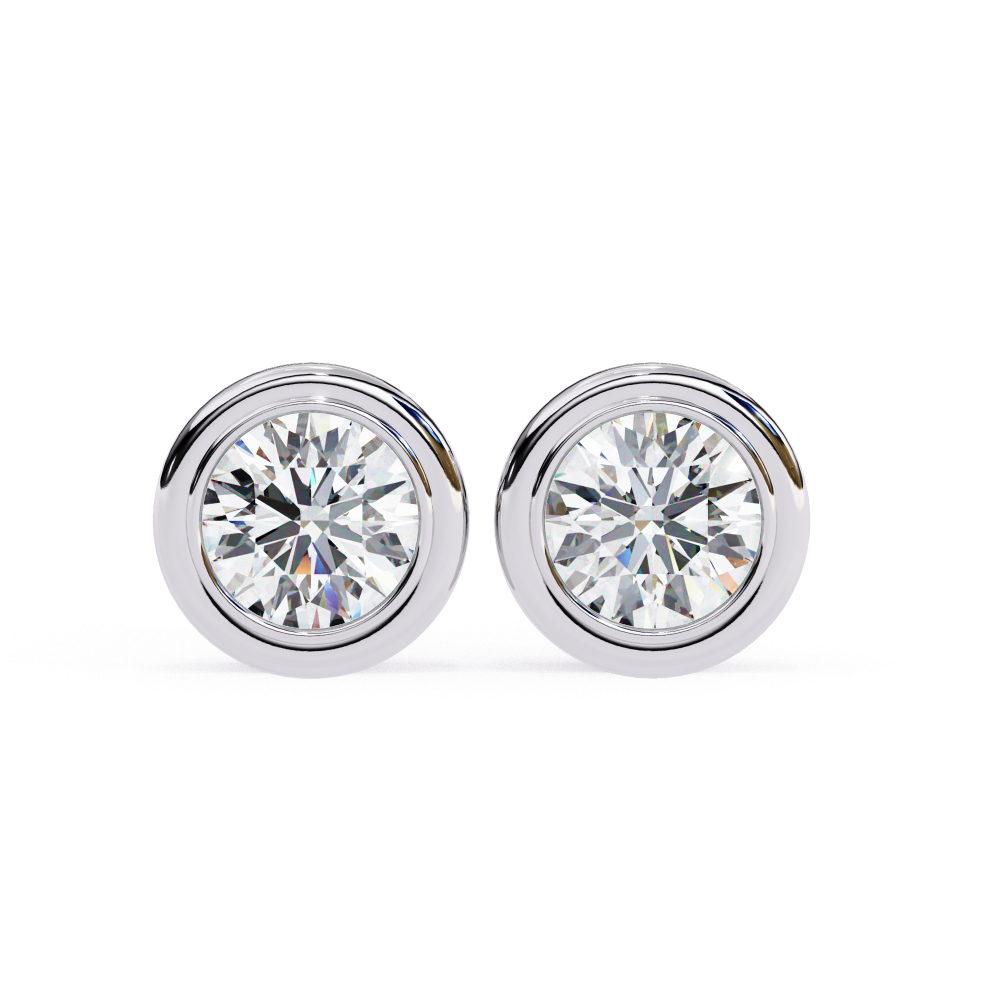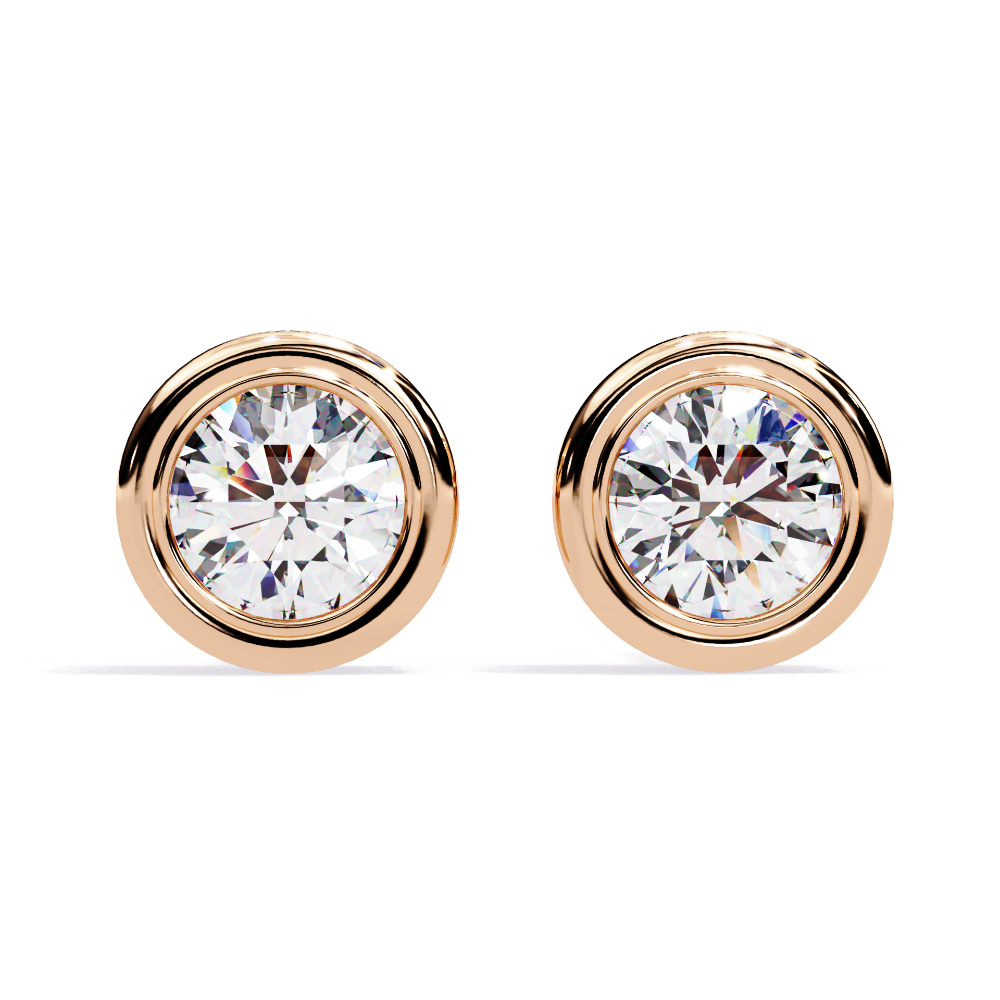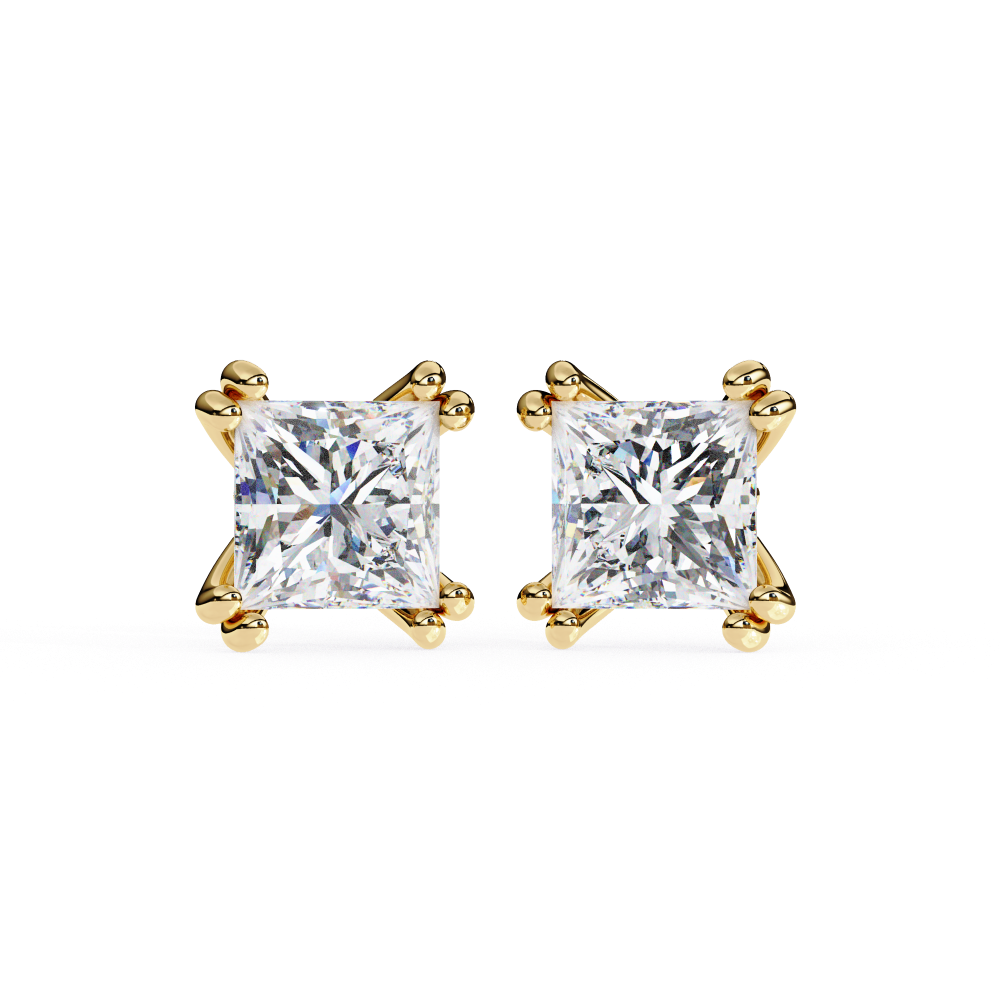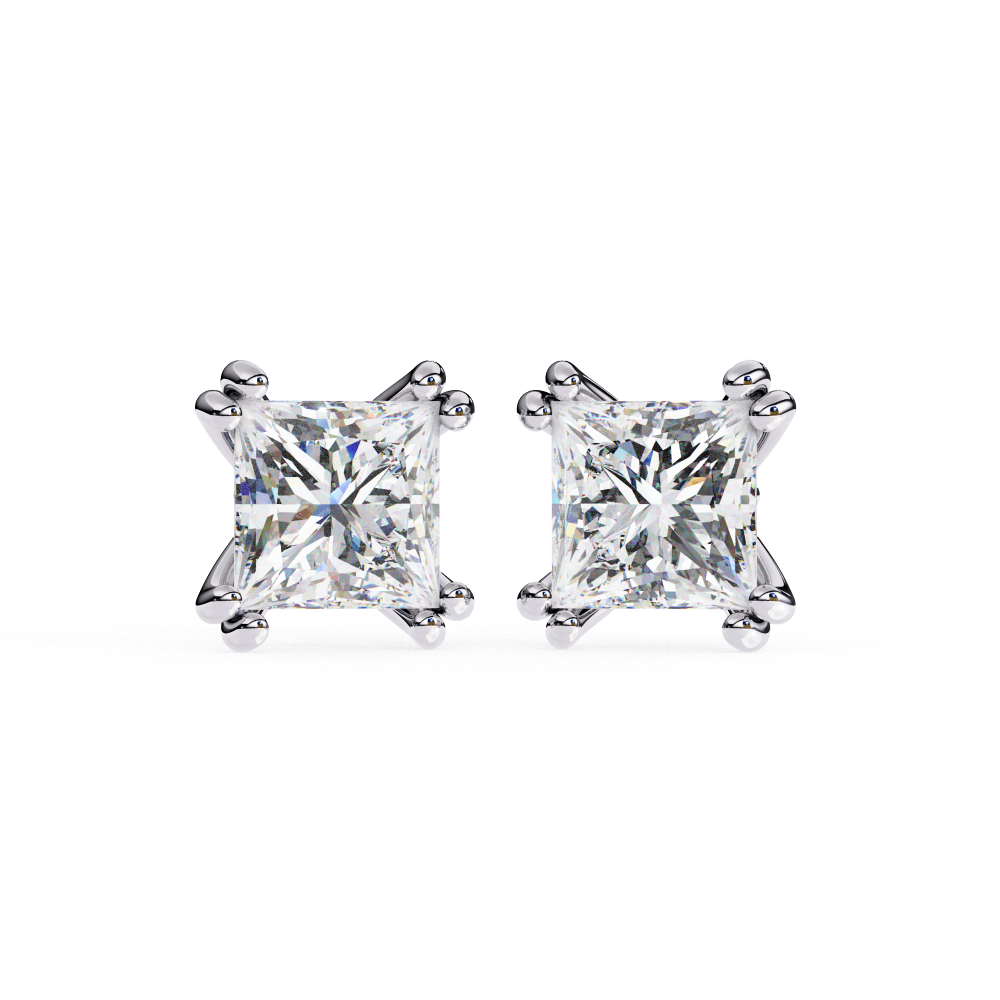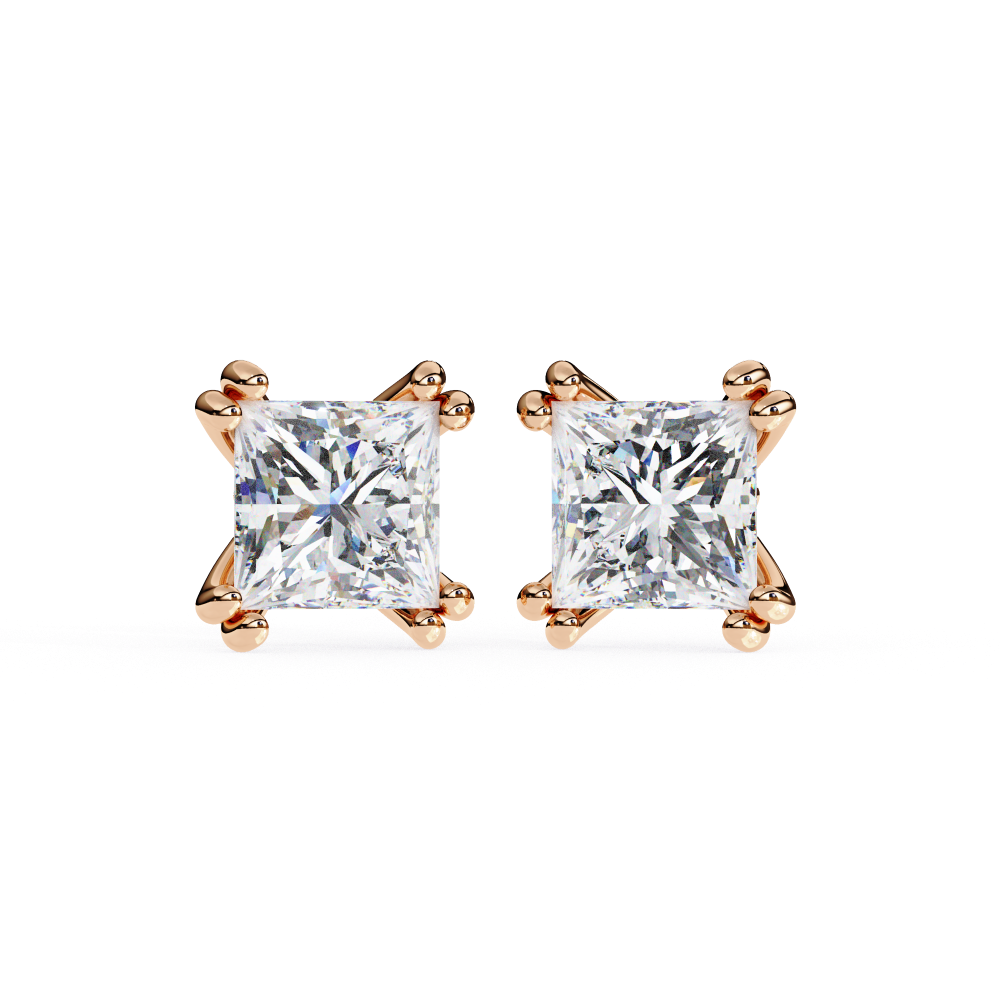
Lab-Grown Diamond Solitaire Earrings
Each pair of our lab-created diamond solitaire earrings captures the essence of beauty and meaning. These earrings are made to celebrate your special moments and become a lasting reminder of your journey.
The Charm of Diamond Solitaire Earrings for Every Moment
Lab-grown diamond solitaire earrings are designed to reflect your unique story and special moments. Whether you're marking an important milestone or simply treating yourself, these earrings capture the feelings that make life memorable and turn them into lasting treasures.
Discover breathtaking designs in round and emerald cuts, exquisitely mounted in your preferred choice of yellow gold, white gold, or rose gold. These timeless creations provide an exquisite blend of heritage and contemporary elegance, perfect for Indian weddings, festivals, or everyday elegance.
Our lab created diamonds possess the same chemical composition and brilliance as natural diamonds but are crafted with a lighter environmental footprint. Ethically sourced and IGI-certified, they deliver exceptional sparkle while letting you shine responsibly.
At Better Diamonds, we believe jewellery should resonate deeply with you and the world. Choose solitaire earrings that express your true feelings and shine brilliantly for a lifetime.

Questions
Lab-grown diamonds are generally more affordable than natural diamonds because the production process is faster and more controlled. They also come in a wider variety of colors and sizes. Additionally, they are considered environmentally and ethically better since they don’t involve mining, which can be harmful to the environment and sometimes linked to exploitative labor practices.
Some people also appreciate the fact that lab-grown diamonds have a known origin, which adds to their appeal. However, they are chemically and visually indistinguishable from natural diamonds, so you can’t tell the difference without specialized equipment or testing.
Manufacturing Process: Lab-grown diamonds are made in controlled environments using advanced technology. This process is faster and less resource-intensive than mining, which requires digging deep into the earth, extracting the diamonds, and transporting them to processing facilities.
Supply and Demand: Natural diamonds are rarer, and their supply is limited. The process of mining diamonds takes a lot of time and effort, which drives up the cost. Lab-grown diamonds, on the other hand, can be produced in large quantities without depleting natural resources, which makes them more affordable.
Labor Costs: Mining diamonds involves a lot of manual labor, sometimes in challenging or dangerous conditions, which adds to the cost. In contrast, lab-grown diamonds are created in laboratories where the process is more automated.
No Middleman Markup: Lab-grown diamonds typically bypass many of the traditional markups that come with mined diamonds. Since they’re produced directly by companies in labs, the pricing structure is often simpler and more transparent.
That said, even though lab-grown diamonds are cheaper, they still have the same physical and chemical properties as mined diamonds, so their value is based on factors like size, cut, color, and clarity—just like natural diamonds.
If you’re shopping for one, this price difference can be a big selling point, especially if you want a larger or higher-quality diamond for a lower price.
Durability Factors: Hardness: This refers to the diamond's ability to resist scratching. Since lab-grown diamonds are chemically the same as natural diamonds, they are just as hard. You’d need a substance harder than a diamond to scratch it, which is incredibly rare.
Toughness: While diamonds are hard, they are not necessarily the toughest material—they can be brittle if struck in the wrong way (e.g., dropped on a hard surface). Both lab-grown and mined diamonds have the same level of toughness, so they can break or chip if hit with enough force.
Long-Term Wear: Lab-grown diamonds will withstand years of daily wear without losing their sparkle. Their brilliance comes from the way light reflects off the facets, and this remains intact over time if properly cared for.
Resistant to Tarnishing: Diamonds don’t tarnish or corrode over time, whether they’re lab-grown or mined. So, your lab-grown diamond will continue to look beautiful with minimal maintenance.
The only difference you might find between a lab-grown and a mined diamond is the potential for inclusions (tiny internal imperfections). But these inclusions aren’t likely to affect durability. Proper care (like avoiding sudden impacts and keeping your diamond clean) will keep either type looking great for generations.
Certification Process: Natural Diamonds: When you buy a natural diamond, it's typically certified by one of the leading gemological organizations like the Gemological Institute of America (GIA), American Gem Society (AGS), or International Gemological Institute (IGI). The certification ensures the diamond's quality based on the 4 Cs.
Lab-Grown Diamonds: Lab-grown diamonds can also be certified by the same organizations, but the certificate will explicitly state that the diamond is synthetic or lab-created. For example, GIA has a specific lab-grown diamond report that mentions the diamond’s origin, confirming it's grown in a lab rather than mined from the Earth.


